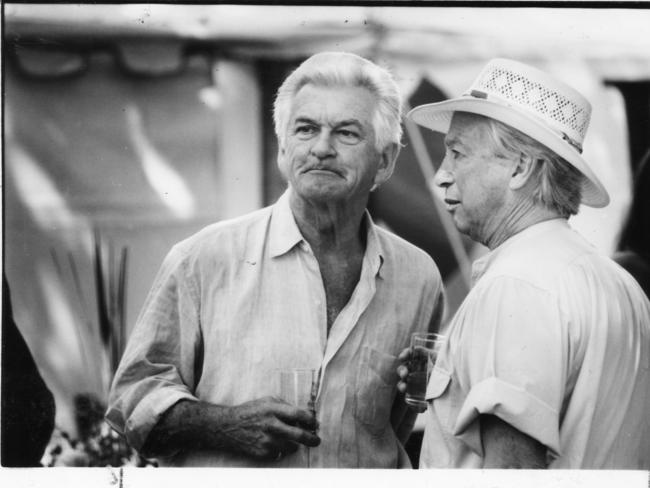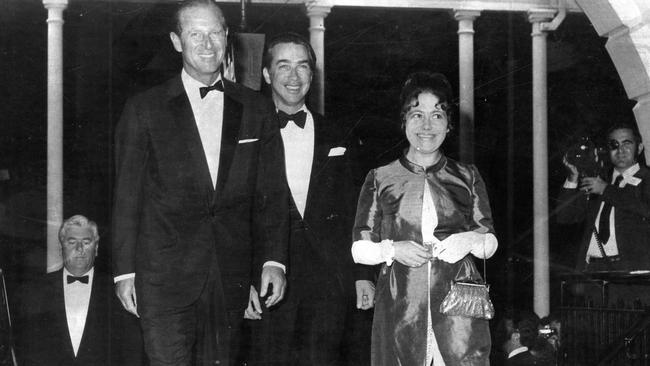David Penberthy: Dunstan helped create a town which is classier, more couth and vastly more liveable than any other in this land
If you think Adelaide’s dull, you should have seen it before Don Dunstan was in charge, writes David Penberthy.
If you think South Australia is boring now, imagine what it was like before Don Dunstan came along.
Whenever you sit outside on a street table having a cup of coffee, take a special wine along to a BYO restaurant, knock up some hokkien mee for dinner (or head into the Asian Gourmet to buy some), go to the Fringe, Festival or Writers’ Week, you’re the happy beneficiary of a way of living that was envisaged and implemented during what came to be known as the Dunstan Decade.
If you’re an indigenous person who was once forced to carry an ID card or had no access to your familial lands, a non-Anglo immigrant who was barred entry to this country under the White Australia policy, or a female job applicant who would (legally) endure questions about your marital status or whether and when you planned on having kids, you can doff your cap in Don’s direction, too.
Political biographies are often dour and dusty affairs that feel every bit as dead as the subject of the author’s attention.
Not so a new biography of Dunstan by historian Angela Woollacott, an Unley High School graduate who grew up in Adelaide’s south and now holds the impressive position of Manning Clark Professor of History at the Australian National University.
Woollacott’s book makes the Dunstan legacy feel fresh and alive. While she is clearly an admirer of the former premier, the book is not without its criticisms.

At a time when economic aptitude is seen as a bedrock requirement for those in political life, the revelation that Dunstan would ask his first wife, Gretel, an economist, to help him work out the percentages in the State Budget does nothing to dissuade those who argue the Liberals are the natural party of prudent economic management.
In an economic sense, though, Dunstan lived a charmed political life, inheriting a robust manufacturing and farming-based economy that had flourished under the stewardship of Tom Playford and kept chugging along nicely through the 1970s.
As such, the book focuses on Dunstan’s social reforms and his championing of social justice, rightly elevating Dunstan to the status not of a South Australian figure but a national figure, as evidenced by his protracted and ultimately successful campaign to take on Doc Evatt within the Labor Party in ditching the White Australia policy on both moral and economic grounds.
It was, of course, the Liberals’ Harold Holt who deserves ultimate credit for removing the policy in government — at the same time Dunstan was leading the charge to scrap it as Labor policy.
The thing I like about the book is that it scotches the perception of Dunstan as a mad Leftie and paints him more accurately as a methodical leftie.
Woollacott says the reason Dunstan succeeded — like Bob Hawke, like John Howard — is that he was a conviction politician and a consensus politician. He managed to achieve such amazing change, in such a conservative state, because he stuck to his beliefs and argued the benefits of his beliefs to a public that stuck with him overwhelmingly for almost 10 years.
Indeed, despite being a huge fan of Gough Whitlam, the book quotes Dunstan as being pointed in his criticisms of Whitlam’s political style.
“It was his failure to establish consensus, to require loyalty to a consensus, to give that loyalty himself to a consensus, which was his major undoing,” Dunstan said of Whitlam in a 1979 interview with, of all publications, Playboy magazine.
This criticism of Whitlam’s crash-through style showed that Dunstan’s approach was framed instead about securing majority support for ideas that had long seemed radical or ridiculous.
And speaking of playboys, in the same way that people now wonder in the age of social media and a 24-hour news cycle whether Australia could have another Lothario prime minister like Hawkey, the question can be asked with even more bewilderment about Dunstan, who in this book is confirmed as having the most exotic and rapacious sexual appetites of possibly anyone in the history of public life in Australia.
The number and nature of Dunstan’s affairs documented in this book makes you feel like you’ve led a pretty sheltered life. You could fairly describe him as a sensualist, who — in the same way as he derived so much sensual pleasure from the dishes and ingredients he described in his excellent cookbook — also derived a comparable level of pleasure from the erotic company of both women and men.

How the hell did all of this happen in Adelaide?
The city of Methodists and Lutherans, of six o’clock closing, temperance meetings, the City of Churches, for God’s sake, where the parliament had been run for decades by the landed gentry?
And all this from a Saints boy?
I have no noteworthy recollections of the Dunstan era, having been born in 1969, but I feel like the lucky beneficiary of his legacy as he helped create a town which is classier, more couth and vastly more liveable than any other in this land.
The lesson from this book, and his life, for the current generation of politicians is a simple one, and it applies across both sides of politics. Just have a go. Stick to your guns and have a go.
As Paul Keating said a few years back, too many people in politics these days don’t know which side of bed to get out of without a focus group telling them.
Not so with the methodical Dunstan, who, even though his bed was often full, would spring out of it each day to make the most polite form of war with the forces of stuffiness that were keeping this staid old town trapped in the 19th century.
Don Dunstan: The visionary politician who changed Australia, by Angela Woollacott, Allen and Unwin, RRP $32.99
